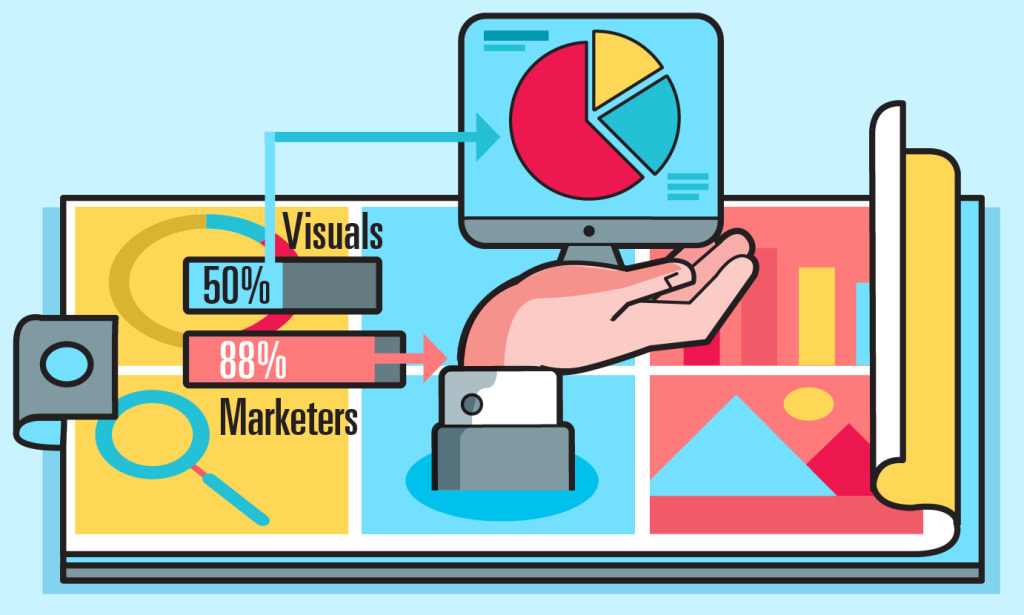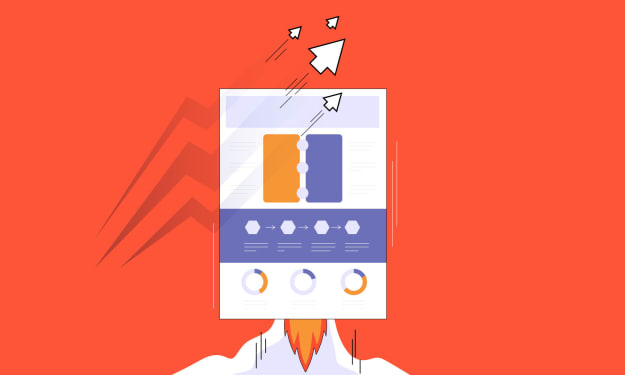
Everything is relative in this world, where change alone endures. This applies to how we communicate information as well. The best example of this is the fact that infographics have now started outperforming regular content.
Multiple reasons contribute to this newfound popularity for infographics.
The most obvious one is because it is simply easy to understand the information presented as an infographic compared to text. Visuals are appealing to the human brain as it gives them a better-illustrated understanding than text. In numeric terms, its nearly 60,00 times easier to process images than text (No, that 60,000 figure isn’t a typo).
In 2012, #infographic was shared more than 55,000 times on Twitter, signaling how important it has become for blog rankings and content visibility.
For marketers, one stat shared by Statista should matter above all else i.e.
“About 67% of Marketers in America used visual materials as one of the top marketing tactics”.
Infographics have the overt ability to make your content go viral while generating several high-quality backlinks, as well as improving your site’s overall SEO.
How Infographics Improve Your SEO Ranking
Infographics are an incredibly proficient visual tool that can increase the traffic to your website many folds. Additionally, it will improve your site’s ranking across the board.
But here are some other benefits of using infographics and how they can become a formidable tool for marketers in optimizing their content.
Easy-to-Share, Easy to Link
In short, infographics make your content easier to share, while providing measurable metrics allowing you to monitor exactly what works best for your popularity online.
As a recent Hubspot report indicated, infographics are almost thrice as much likely to get shares and likes on social media than any other form of content.
There are multiple benefits of using infographics on social media platforms as it makes it easier for your audience to interact with your content. Similarly, it contributes positively to your presence online via indications for search engine crawlers. All of this while result in higher SERPs (Search Engine Results Page) ranking for both your content and site.
Furthermore, with the infographics embedded in your website, you’ll have a permanent linkable asset that never diminishes in terms of relevance. In most cases, this kind of content continues to be shared months after the initial publication as it retains relevancy for longer periods than other forms of content.
"One excellent way to promote your infographic is to splice up the points you make and share them socially. A great way to do this is to add “tweetable” to your landing page. Tweetables help your visitors share stats and facts from your infographic, driving engagement as well as traffic back to your infographic" says Robin Brown, CEO of VIVIPINS.
Better High-Quality Link Building
Ask any digital marketer, and chances are that link building will constantly rank high in the list of crucial yet difficult aspects of good SEO. This is where infographics make the whole process easier for you.
Of course, unsubstantiated content rarely performs well. Infographics are no different. However, thoroughly researched and references infographics will bring you dozens of high-quality backlinks based on their sheer superiority to other forms of content.
Hence, your infographics must be the perfect blend of research, visual perfection, and relevant to a particular industry. If you achieve all three, you won’t just see your information being shared but it will bring due credit as well.
And that’s not even the best part.
These infographics directly impact your performance in SERPs.
According to Tristan James from Assisted "Infographics can be found useful by providing useful and value information to users and they’re a good tool for building backlinks to your site, on the assumption you’ve done the correct research into potential publications who might be interested."
Easier Guest-Posting
While guest posting is undeniably becoming more challenging. So is acquiring natural links to your content. Marketers find themselves putting a tremendous deal of effort owing to how webmasters now have rigorous external linking policies.
This is where infographics can be mutually beneficial as they allow the webmasters to link back to your website while at the same time adding value to their reader’s overall experience.
The best way to get your infographics is to simply reach out to webmasters and pitch them your infographic idea. After that, it’s the usual routine of telling them how the infographic relates to their readers and how it could elevate their blog’s quality.
It is a simple, yet highly effective way of promoting your content in a way that raises your chances of gaining backlinks for your website.
Negate Bounce Rates
“Websites with low average bounce rates are strongly correlated with higher rankings”.
This is no longer up for debate as a recent Backlinko report proved as such. Unsurprisingly, marketers have tried every possible trick in and out of the book to try and decrease their website’s bounce rates.
So, what have these marketers been missing so far? You guessed it, infographics.
The technique is still criminally underrated and not an industry-standard practice, yet. But effectively made and meticulously researched infographics make your content visibly more interesting. This leads to higher engagement with readers and that leads to, you guessed it again, lower bounce rates on your website.
According to Beth Noll from Gift Observer "The second way in which infographics improve your rankings is that they increase the dwell time or time spent on page, which is an important ranking factor. If readers spend a long time on your webpage then clearly the page must be meeting their needs"
Wrapping Things Up
Several factors affect your website’s SEO in different ways. Hitherto, you can use dozens of different techniques to improve your results. However, few are as simple or underrated as infographics.
Infographics have started to become increasingly popular to convey important bits of information online through creative means. They could prove vastly helpful for your SEO needs as well.
There is one fundamental principle to follow i.e. “Make sure your infographics are well-researched”. Doing so will provide you an increase in your SEO rankings that you’ve always wanted.
About the Creator
Anna Sam
I have 10+ years experience in SEO and Marketing.






Comments
There are no comments for this story
Be the first to respond and start the conversation.